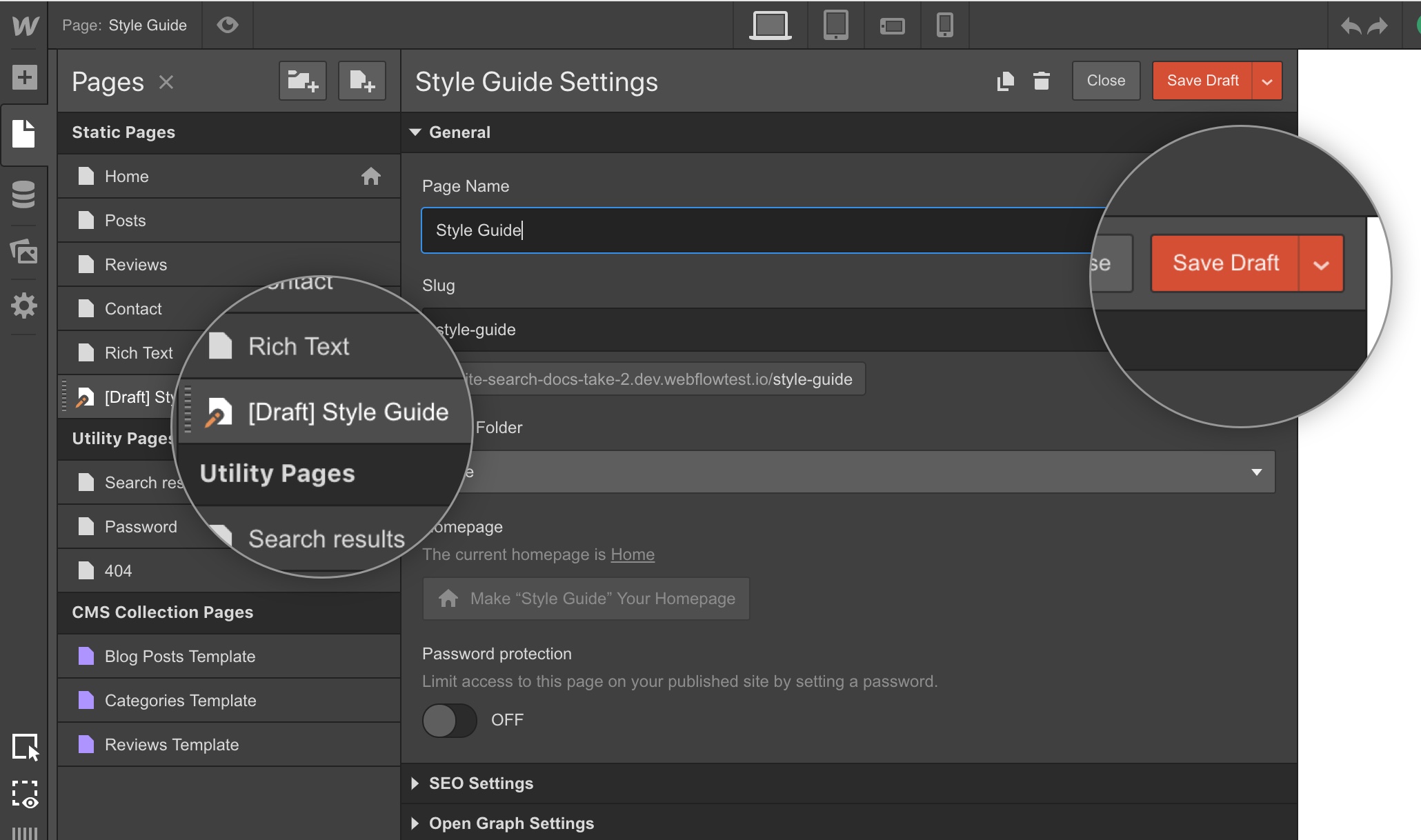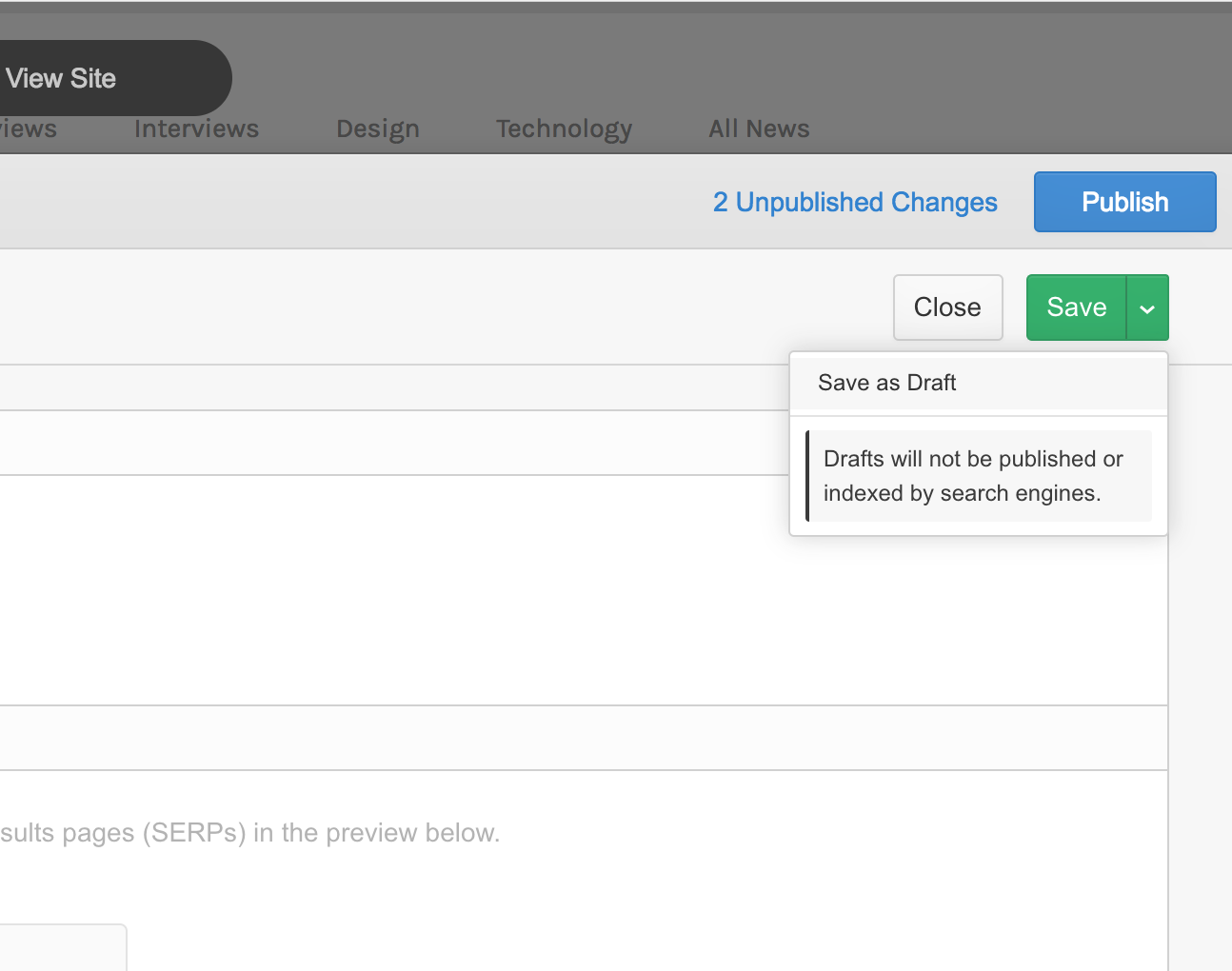Sometimes you want to start working on a page, then come back to it later — without publishing it to your site in the process. Or you simply never want to publish a page at all.
Cue, drafted pages.

“Cool feature. But what is this good for?”
Glad you asked. We built this to help out with a bunch of core workflows, including:
- Unfinished pages. Pretty simple: if you’re not done with something, don’t publish it yet.
- Internal pages. Got a style guide page? An internal documentation page? Set it as a draft and it’ll only be visible in the Designer and Editor.
- Archived content. Got an old page that you don’t want to publish, but don’t want to get rid of? Set it as a draft.
- Backups. Want to keep a version of a page but hide it from view? Set it as a draft.
Does this work in the Editor?
Yep! Now your writers, clients, and other content editors can set pages as drafts if they want to hide a specific page from public view.

What about on export?
Pages you set as drafts will still be included in your site files when you export your code — draft pages are simply not published to the web when you publish from the Designer or Editor.



